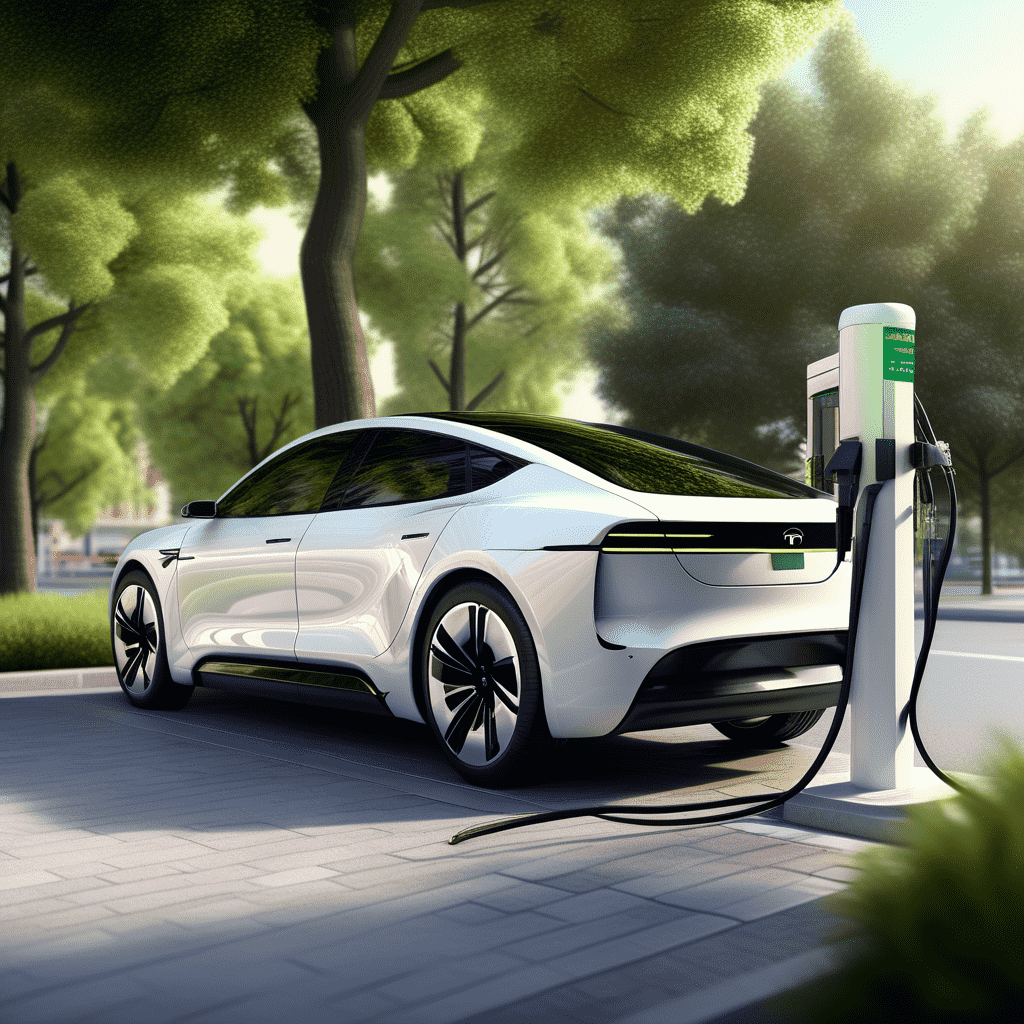A Comprehensive Guide to Tesla’s Autosteer Technology ( 2023 )
Table of Contents
Tesla’s Autosteer
The Tesla’s Autosteer which has caught the attention of both travelers and vehicle aficionados, is one of their distinguishing characteristics. Tesla has been an inspiration in the field of advanced automobile technology, pushing the limits of what is possible. In this post, we’ll explore the Auto steer technology from Tesla, its features, and how it’s influencing the development of autonomous vehicles.

Tesla’s Autosteering is an advanced driver assistance system designed to provide an enhanced driving experience. It is part of Tesla’s larger “Autopilot” suite of features, which includes adaptive cruise control, auto lane-keeping, and more . Autosteer, however, focuses specifically on the steering aspect of driving.
Is Tesla Autosteer the Same as Autopilot?
While Autosteer is a component of Tesla’s Autopilot suite, it’s important to note that they are not the same. Autopilot features a broader range of features, including adaptive cruise control, traffic-aware cruise control, and more. Having the ability to seamlessly control autopilot enhances driving convenience, promotes safety, and enables a more enjoyable and stress-free journey for the driver. The auto-steer feature, on the other hand, is primarily responsible for steering within a lane, making it a key part of Autopilot.
Benefits of Using Autosteer

The advantages of using Autosteer are numerous. It reduces driver fatigue on long journeys, enhances safety through its collision avoidance features, and optimizes highway driving. Moreover, it represents a glimpse into the future of autonomous driving technology.
Tesla’s automatic steering feature makes long drives more comfortable. It takes the strain off the driver’s shoulders, particularly during monotonous stretches of highway driving. With self-driving activation, the car adeptly stays within the lane, allowing the driver to focus on monitoring the road and enjoying a more relaxed journey. You can set the speed to match the recommended limit on the highway.
Automated steering collision avoidance features are also quite helpful. The system uses a combination of sensors and cameras to detect obstacles and other vehicles on the road. If a potential collision is detected, the car can automatically brake or steer to avoid the hazard, significantly reducing the risk of accidents. It offers a fully attentive driver feature for ensuring safe and responsible vehicle operation, minimizing the risk of accidents, and promoting road safety.
Autopilot is a more comprehensive system, managing speed and distance, while Auto-steer focuses on lane centering. It uses a combination of cameras, sensors, and radar to keep the vehicle within its designated lane. It assists with steering, especially during highway driving, and enhances safety.
Safety Features of Tesla's Autosteer
Safety is a paramount concern for Tesla. It includes multiple safety features to ensure a secure driving experience. These features include collision avoidance, blind-spot monitoring, and automatic emergency braking. The system is designed to reduce the risk of accidents and provide a seamless driving experience.
What is the Maximum Speed of the Tesla Autosteer?
The maximum speed at which Autosteer can operate depends on several factors, including road conditions, visibility, and regulatory limits. Generally, auto-steer is most effective on highways, where it can assist in maintaining the vehicle within the lane at speeds between 45 and 85 miles per hour.
How to Turn On Autosteer in a Tesla?
Turning on Auto-steering in a Tesla is a simple process. Drivers need to engage Autopilot through the vehicle’s touchscreen, confirm that the necessary conditions are met, and keep their hands on the steering wheel to monitor the system. It operates under the supervision of the driver.
How to Use Autosteer in a Tesla?
Using this feature is as intuitive as turning it on. Once activated, the system takes control of steering, keeping the car centered within the lane. However, it’s essential for the driver to remain vigilant and ready to take control if needed, especially in unexpected situations or adverse weather conditions.
Limitations and Considerations
This feature is a remarkable advancement, but it’s not without its limitations. It may not function optimally in adverse weather conditions, such as heavy rain or snow, or on poorly marked roads. It’s crucial for drivers to use this function responsibly and maintain control of the vehicle.
Navigating through city streets has become more seamless with enhanced autopilot features. As a driver, you can experience the convenience of hands-free control, with the system adeptly handling various scenarios. Whether it’s recognizing and stopping at a stop sign or efficiently responding to traffic lights, the technology of traffic light and stop sign control contributes to a safer and more relaxed driving experience on the city streets. Despite the enhanced capabilities, it’s important to keep your hands on the wheel to ensure a collaborative effort between the driver and the advanced autopilot system, maintaining a balance of control and automation for a smoother journey.
Poorly marked roads can sometimes confuse this technology, as it relies on clear lane markings to operate effectively. In these situations, drivers must take extra care and be prepared to take over steering.
Additionally, it is not a fully autonomous system. Drivers must always keep their hands on the steering wheel, ready to intervene if necessary. It’s meant to assist rather than replace human drivers, emphasizing the importance of responsible usage.
The Future of Tesla's Autosteer
Tesla is continually updating its auto-steering technology, with a strong focus on enhancing safety and reliability. As autonomous driving technology evolves, it will likely play a pivotal role in shaping the future of transportation.
The company’s commitment to improving Self-Driving is evident in its over-the-air software updates, which provide enhancements and refinements. These updates ensure that Tesla vehicles equipped with automated steering stay up-to-date with the latest advancements in autonomous driving technology.
As the automotive industry moves closer to full autonomy, it’s clear that Tesla’s technology will continue to evolve and pave the way for self-driving cars. The prospect of safer, more efficient transportation is becoming increasingly attainable.

Autosteer: A Glimpse into the Future
Tesla’s Autosteer system offers us a sneak peek into the future of transportation. As we move closer to a world where self-driving cars are commonplace, the advantages of systems like auto steering become even more evident.
Imagine a world where your daily commute becomes a time for relaxation, work, or entertainment rather than a stressful endeavor. Auto Steering, along with Tesla’s broader Autopilot suite, aims to make this vision a reality. It’s about creating a safer, more efficient, and more enjoyable driving experience for all.
With ongoing advancements in technology and a commitment to user safety and feedback, self-driving and similar systems have the potential to revolutionize the practice of transportation. The road to autonomy may still have some twists and turns, but Tesla’s auto steer function is leading the way.
As Tesla continues to innovate and enhance its Autosteering technology, we can expect further advancements in the realm of autonomous driving. Full self-driving capability is part of the company’s long-term ambition, and Auto Steering is essential to this process.
One of the key developments to look forward to is the expansion of Autosteering operational range. Tesla is actively working on increasing the speed limits at which the system can be engaged and widening its usability in various road and weather conditions. Automatic steering will become an even more useful tool for drivers as a result of this expansion.
Additionally, it is anticipated that Tesla’s The auto steer system will become more flexible in city and urban driving situations. While it currently excels on highways, the company aims to refine the system’s performance in complex, stop-and-go traffic situations. This will mark a significant step towards full autonomy, where a Tesla vehicle can handle all aspects of driving.
User Experiences and Feedback
Let us examine some user experiences and comments to obtain a better idea of Auto Steer’s performance in actual use. Many Tesla owners report positive experiences with self-driving, praising its convenience on highways and its safety features.
One common sentiment among Tesla drivers is that it transforms long drives into more enjoyable experiences. It minimizes the stress and fatigue associated with extended journeys. While drivers must remain attentive, the system’s ability to handle much of the steering provides a substantial reduction in the effort required for highway driving.
User feedback often highlights the autopilot’s ability to enhance safety. The system’s quick reaction times to potential hazards and its ability to avoid collisions are often commended. Tesla’s dedication to improving this feature is based on user feedback, which underscores its commitment to delivering a safer driving experience. Dialogue feedback is crucial for fostering effective communication, as it enables individuals to exchange ideas, perspectives, and insights in a constructive and mutually beneficial manner.
Tesla’s Auto steer, a pivotal component of the enhanced autopilot system, has redefined the driving experience by seamlessly integrating cutting-edge technology into the daily commute. This innovative assistance system incorporates auto lane detection and utilizes the traffic-aware cruise control feature to navigate smoothly through various driving conditions. As part of the autopilot suite, the system enables a hands-free experience, allowing the driver to engage with hands-on-the-steering-wheel assurance while benefiting from the safety features embedded in the vehicle. The steering column becomes a conduit for the synergy between the fully attentive driver and Auto steer, promoting a collaborative approach to road safety. Click to expand the capabilities of Auto-steer, and you’ll find it goes beyond mere automation, incorporating traffic light and stop sign control for a comprehensive, efficient journey. Tesla’s commitment to full self-driving capabilities is evident in the continuous evolution of Auto-steer, creating a hands-free driving future that is not only reliable but also marks a significant stride towards the realization of autonomous vehicles. Traffic lights become cues for the enhanced autopilot to navigate intersections, showcasing the sophisticated integration of Auto steer into the overall driving experience. Embracing Autosteering means embracing a driving ecosystem where hands-free convenience meets the safety and reliability of cutting-edge technology.
Conclusion
In conclusion, Tesla’s Autosteer is a remarkable feature that makes driving safer and more convenient. While it’s an important part of the Autopilot suite, it’s crucial to understand the distinctions between the two. This platform offers a wide range of features and functionalities to cater to diverse user needs. it represents a significant step towards a future where autonomous vehicles are a common sight on our city streets.
FAQs
Is Tesla Autosteer the Same as Autopilot?
No, Auto steer is a component of Tesla’s Autopilot suite. Autopilot includes a broader range of features, while Auto-steer primarily deals with lane centering.
What is the Difference Between Autopilot and Autosteer?
The key difference lies in their scope. Autopilot includes features like adaptive cruise control, while Autosteer primarily manages steering within a lane.
What is the Maximum Speed of the Tesla Autosteer?
The maximum speed at which Autosteer operates is typically between 45 and 85 miles per hour, depending on road conditions and regulatory limits.
How to Turn On Autosteer in a Tesla?
To activate Autosteer, you need to engage Autopilot through the touchscreen, confirm the conditions, and keep your hands on the steering wheel for supervision.
How to Use Autosteer in a Tesla?
Using Autosteer is straightforward. Once activated, it takes control of steering, but the driver must remain attentive and ready to take over when necessary.
For more information on Tesla’s Autosteer and to experience its benefits,
Discover more about Tesla Car Wash Mode




0 Comments